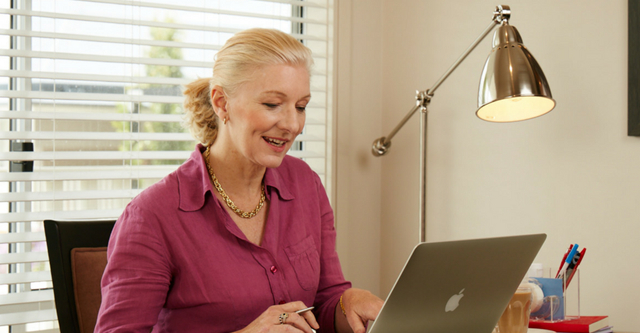- Home
- /
- All blog articles
- /
- How much savings can a pensioner have in the bank?

How much savings can a pensioner have in the bank?
The best time of your life is approaching. You can see your pension age popping up on the horizon. Retirement is calling your name from the not-so-far distant future. The birds are tweeting, the sun is shining, a light breeze twirls around you and all of a sudden… it gives you the shivers.
“Do I actually have enough savings in my bank account? Or is the amount affecting my pension payments for the worse? Are there any hidden tricks I didn’t think of? Will extra equity have an impact on my pension?”
Truly, having your finances sorted for your future is important and therefore can create a whole lot of worries. Read on to find out why you can relax with a sigh of relief.

The importance of saving as you enter retirement
After all these years of working and taking care of the things that life throws at you, surely you are looking forward to a comfortable retirement standard. In order to achieve the lifestyle you deserve, it’s important to have some savings and assets that support your finances besides the age pension and Superannuation.
A beautiful home, the bills covered, regular health care treatments, pocket money for your favourite dessert, chic clothes and new hobbies with some spare bucks for little luxuries in between – for the average Aussie, that might be more or less what you are working towards.
Having some savings ready also allows you to have a backup in case life gets a little on the wild side and you need to accommodate hits like buying a new washing machine, being generous for special occasions or allowing for small extra treats.
And while it does take some retirement savings in order to make this scenario come alive, there are also a few aspects to consider before you keep stuffing your piggy bank into a coin-coma.
How much savings can a pensioner have in the bank?
What we are trying to say is, having a lot of savings and assets comes with additional responsibilities. So, even if you are one of the lucky humans on this planet that won in the lottery, that might not be the solution for everything (who would’ve thought?!).
Although having lots of dollars in the bank will surely sort you out for the most part, you actually don’t need millions to have a comfortable retired lifestyle. So fear not, there are ways to work around your expectations and needs no matter what the number on your bank account looks like.
What is the asset threshold for the aged pension?
To identify how much in savings you can have in your account, it’s best to look at the so-called age pension asset limit and asset thresholds for either a full or part pension. It comes down to the amount of savings you already have, plus all sorts of asset types combined.
For example, if you are a single homeowner you can get a full pension with an aged pension asset limit of $314,000. As a couple with a home and combined assets, your aged pension asset limit is reached at $470,000 to receive a full pension.* Anything on top of the limit will reduce your pension, but might still make you eligible for a part pension.
*Source: Australian Government Services Australia, as of 20 September 2024.
How does the age pension asset test work?
The pension asset test calculates if you can get paid age pension, how much it could be and whether you can claim other support too.
In order to receive the age pension you need to be eligible and adhere to certain requirements. There are different types of assets that all have a say in your asset limit. Assets for example include household contents, vehicles, businesses or life insurances you might own. So does your income, savings and any investments such as holding shares or bonds.
All assets are part of the consideration and can affect whether you are still eligible for pension support. Also your legal status and whether you have a partner or not will play a part in your asset limits. Gifts or donations will also have a threshold. *sigh*
Your primary home, your principal residence which you own, is an exempt asset and in that case does NOT count towards the asset test. Yay! However, it does play a part in how your pension is estimated and what your fortnightly pension payments will look like. What does that mean?
Although as a homeowner your primary property does not count towards your asset test, the asset limit for homeowners is set lower than for non-homeowners too. Since you already sorted out your housing situation by buying your own home, it only seems fair to differentiate between the asset limit.
With the asset test you can work out what your current savings and assets predict and take actions in case you want to improve your situation.
What about the equity from downsizing my home?
Choosing a bigger lifestyle by downsizing your home can free up a good chunk of equity along the way. By selling your current property and swapping it for a beautiful home with lots of activities, amenities and more at the doorstep, you can use the excess money for your future living expenses. So what happens to the age pension?
Let’s stick to our previous example: you and your partner are homeowners and, as it currently stands, your combined asset limit to receive a full age pension is at $470,000. Remember: your primary purchased residency does not count towards the asset test and your home value is excluded from the asset limit. So, depending on your status, savings and other assets you own, you might fit right under the limit and therefore can lean back into your favourite garden chair and sip on an icy mocktail while watching your full pension kaching-ing in your bank account.
What if your assets combined cross the asset threshold for the age pension? You might still be eligible for a part age pension, if your total assets value is below $1,045,500. That’s quite a jump and opens up a big range for options! Of course it would be nice to receive a full age pension, but don’t be fooled, because a part pension doesn’t automatically mean 50% less. After all, think about what costs you reduced and saved by downsizing your home in the first place. With Lifestyle Communities® different possibilities, many of your financial worries are already taken care of. Consider how much money you really need for your retirement anyway.
Where to go for further advice about retirement and finances
Get a better idea what this all means for your situation and consider using a pension calculator or doing an income test to find out how much can you earn before it affects your pension. We highly recommend looking for an advisor that can give you detailed financial advice tailored to your scenario. You may also get extra support with the help of the Home Equity Access Scheme.
Questions around downsizing your home and what’s in it for you? Learn more about the benefits of downsizing.
Final FAQ: How much can your house be worth and still get the pension?
Your family home is generally exempt from the assets test, which means that it is not included in the calculation of your pension entitlement. However, if you own other properties, such as an investment property, these will be included in the assets test.


